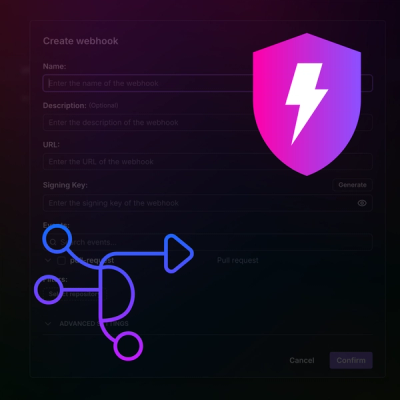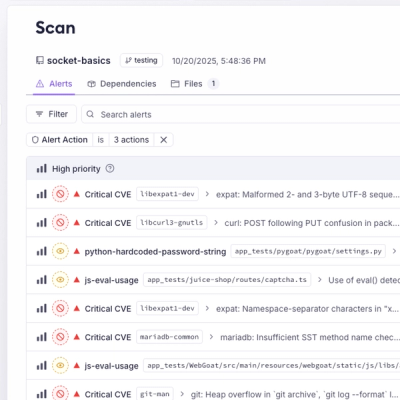
Product
Introducing Webhook Events for Pull Request Scans
Add real-time Socket webhook events to your workflows to automatically receive pull request scan results and security alerts in real time.
postcss-normalize
Advanced tools
PostCSS Normalize lets you use the parts of normalize.css you need, based on your project’s browserlist.
Example:
/* { "browserlist": ["last 3 versions"] } */
/**
* Add the correct display in IE 9-.
*/
audio,
video {
display: inline-block;
}
/**
* Remove the border on images inside links in IE 10-.
*/
img {
border-style: none;
}
/* { "browserlist": ["last 2 versions"] } */
/**
* Remove the border on images inside links in IE 10-.
*/
img {
border-style: none;
}
PostCSS Normalize will put itself at the beginning of your CSS file, unless you dictate where it should be included:
@import-normalize;
Duplicate @import-normalize rules will be removed for your convenience. Only
the first instance will be replaced.
PostCSS Normalize uses the non-opinionated version of normalize.css.
Add PostCSS Normalize to your build tool:
npm install postcss-normalize --save-dev
Add a browserlist entry in your package.json:
{
"browserslist": "last 2 versions"
}
Use PostCSS Normalize to process your CSS:
require('postcss-normalize').process(YOUR_CSS, { /* options */ });
Add PostCSS to your build tool:
npm install postcss --save-dev
Use PostCSS Normalize as a plugin:
postcss([
require('postcss-normalize')({ /* options */ })
]).process(YOUR_CSS, /* options */);
Add Gulp PostCSS to your build tool:
npm install gulp-postcss --save-dev
Use PostCSS Normalize in your Gulpfile:
var postcss = require('gulp-postcss');
gulp.task('css', function () {
return gulp.src('./src/*.css').pipe(
postcss([
require('postcss-normalize')({ /* options */ })
])
).pipe(
gulp.dest('.')
);
});
Add Grunt PostCSS to your build tool:
npm install grunt-postcss --save-dev
Use PostCSS Normalize in your Gruntfile:
grunt.loadNpmTasks('grunt-postcss');
grunt.initConfig({
postcss: {
options: {
use: [
require('postcss-normalize')({ /* options */ })
]
},
dist: {
src: '*.css'
}
}
});
Similar to postcss-normalize, sanitize.css is a CSS library that provides consistent, cross-browser default styling for HTML elements. However, unlike postcss-normalize, it does not automatically adjust based on browserlist and must be included manually in your CSS.
modern-normalize is another CSS reset library that normalizes styles for a wide range of elements. It is similar to postcss-normalize but does not integrate directly with PostCSS as a plugin and must be included separately in your project.
FAQs
Use the parts of normalize.css or sanitize.css you need from your browserslist
The npm package postcss-normalize receives a total of 3,003,794 weekly downloads. As such, postcss-normalize popularity was classified as popular.
We found that postcss-normalize demonstrated a not healthy version release cadence and project activity because the last version was released a year ago. It has 3 open source maintainers collaborating on the project.
Did you know?

Socket for GitHub automatically highlights issues in each pull request and monitors the health of all your open source dependencies. Discover the contents of your packages and block harmful activity before you install or update your dependencies.

Product
Add real-time Socket webhook events to your workflows to automatically receive pull request scan results and security alerts in real time.

Research
The Socket Threat Research Team uncovered malicious NuGet packages typosquatting the popular Nethereum project to steal wallet keys.

Product
A single platform for static analysis, secrets detection, container scanning, and CVE checks—built on trusted open source tools, ready to run out of the box.